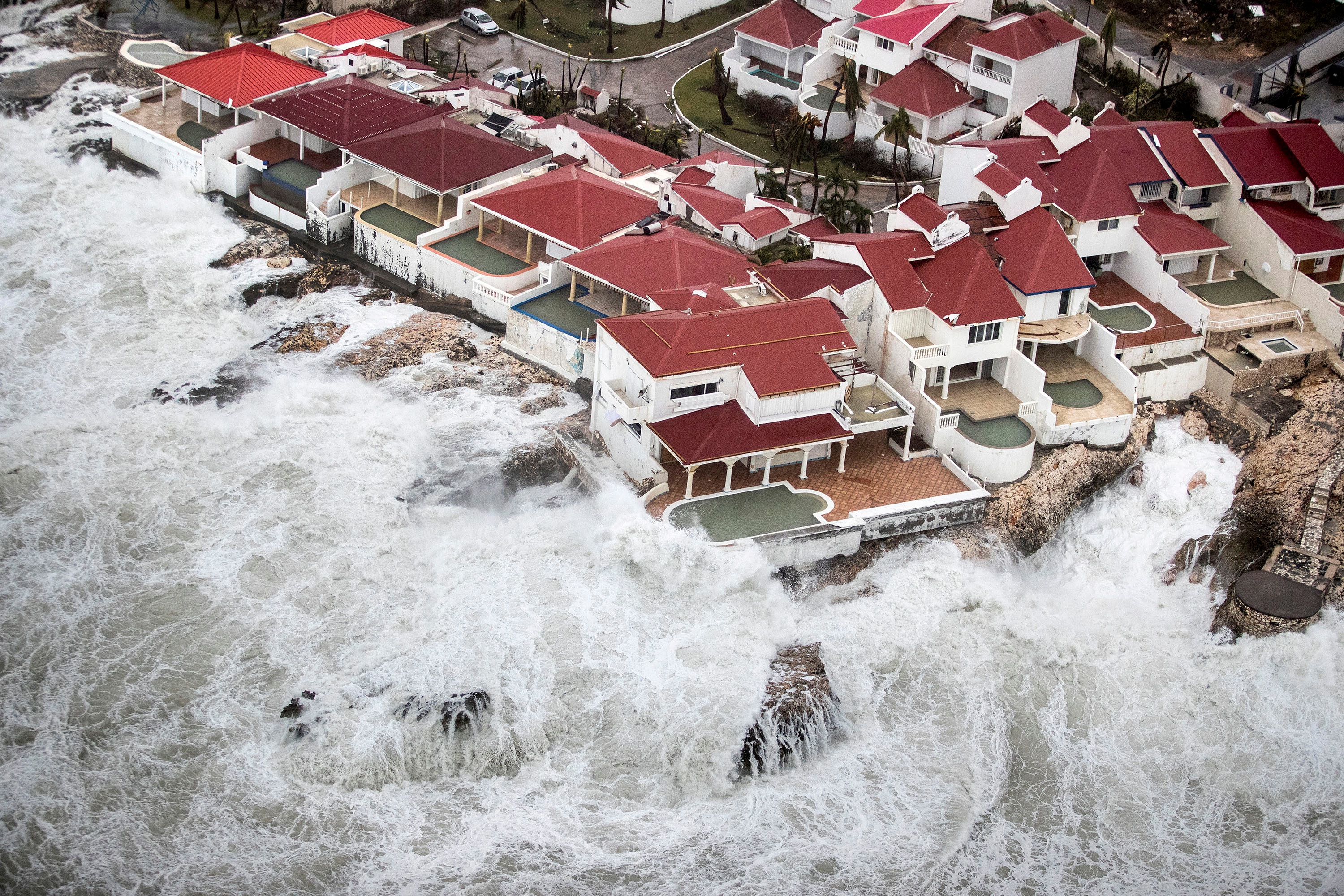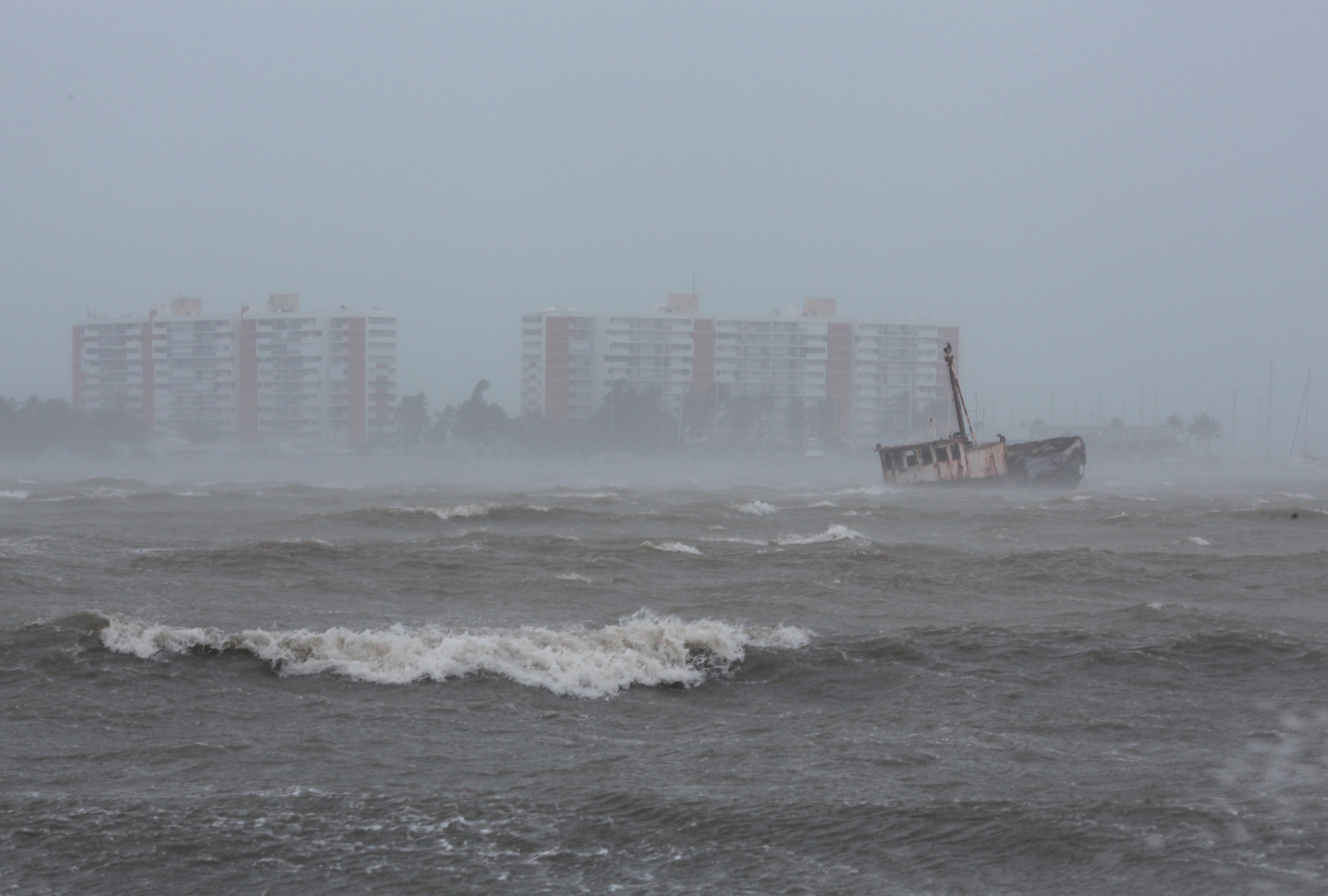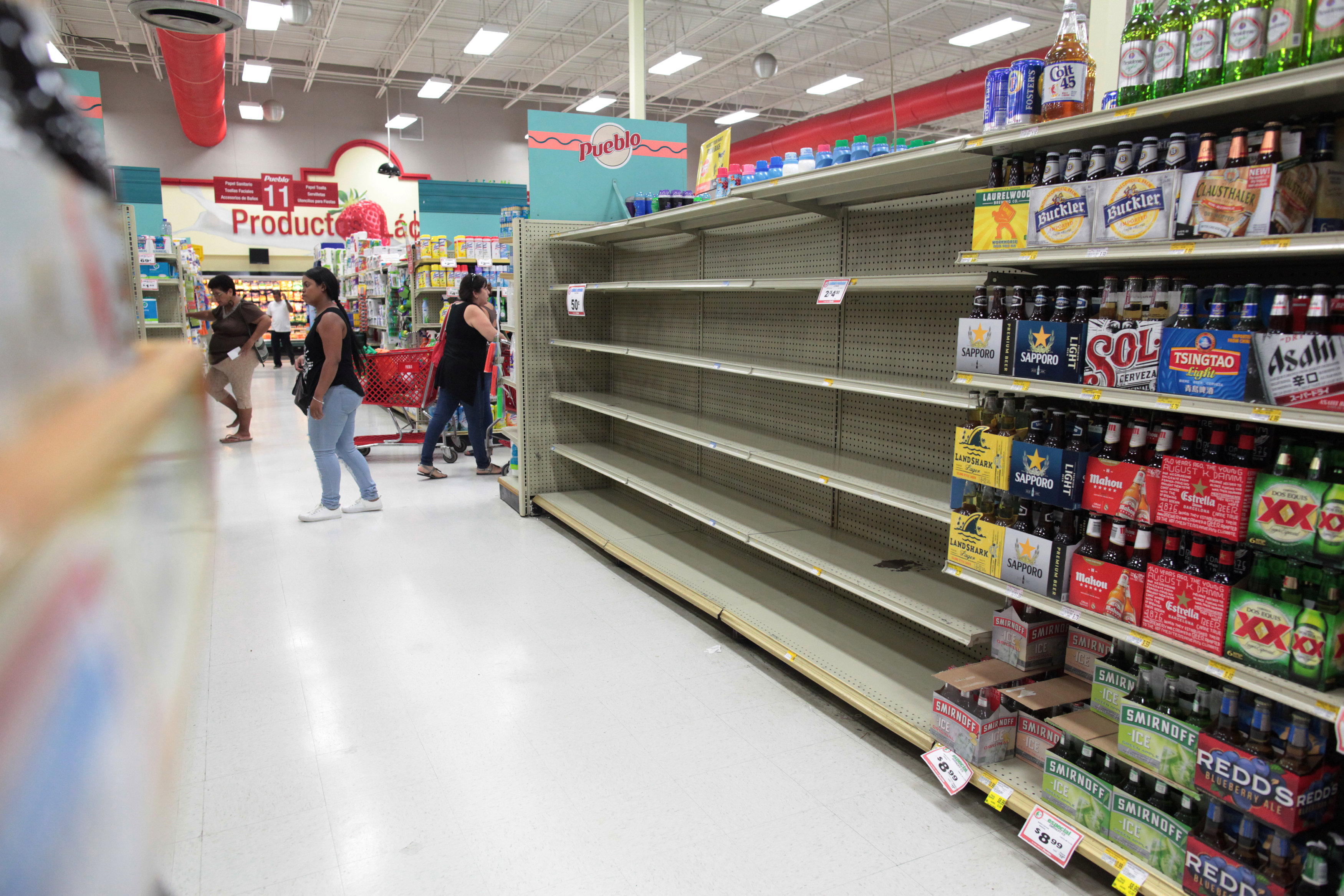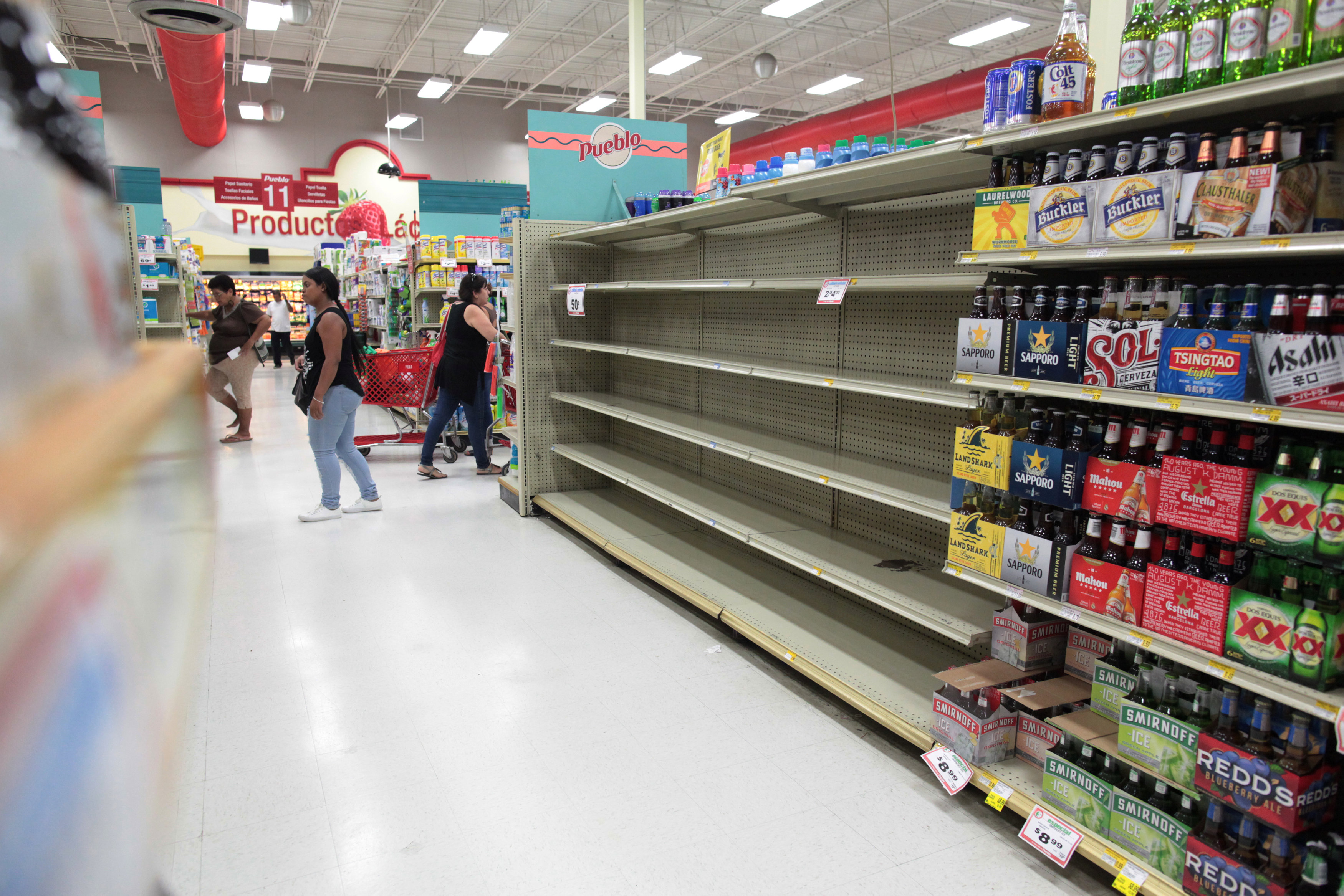
By Jorge Pineda
SANTO DOMINGO, Dominican Republic (Reuters) – Hurricane Irma plowed past the Dominican Republic toward Haiti on Thursday after devastating a string of Caribbean islands and killing at least 10 people as one of the most powerful Atlantic storms in a century took aim at Florida.
With winds of around 175 mph (290 kph), the storm lashed several small islands in the northeast Caribbean, including Barbuda, St. Martin and the British Virgin Islands, tearing down trees, flattening homes and causing widespread damage.
The eye of the hurricane did not directly hit Puerto Rico, passing north early Thursday, battering the U.S. territory with high winds and heavy rains. Three people were killed and around two-thirds of the population lost their electricity, Governor Ricardo Rossello said.
The eye of Irma was moving west-northwest off the northern coast of the Dominican Republic, heading slightly north of Haiti, the National Hurricane Center (NHC) said.
The United Nations Children’s Fund warned that millions of children could be at risk in the two countries, which share the island of Hispaniola. Impoverished Haiti has been particularly vulnerable to hurricanes and heavy rains.
Irma’s eye was forecast to pass over the Turks and Caicos Islands, a British territory, and the Bahamas before moving towards Cuba’s keys.
Irma will likely hit Florida as a very powerful Category 4 storm on Sunday, with storm surges and flooding beginning within the next 48 hours, according to the NHC. Gas shortages in the Miami-Fort Lauderdale area worsened on Thursday, with sales up to five times the norm.
Cuba started evacuating some of the 51,000 tourists visiting the island, particularly 36,000 people at resorts on the picturesque northern coast, most of them Canadians.
“Canada decided … to evacuate all the Canadian tourists in the country,” said Cuban Tourism Minster Manuel Marrero, estimating they made up 60 percent of tourists in the country’s keys.
Authorities in the Dominican Republic ordered evacuations in towns along the northern Atlantic coast such as Cabarete, a thriving tourist spot where trees were brought down by high winds but no severe damage was reported.
“There is a lot of wind and rain,” Puerto Plata Assistant District Attorney Juan Carlos Castro Hernandez told Reuters by telephone. “We expect things to get worse.”
Cabarete was expected to bear the brunt of the hurricane’s winds and storm surge. Hotel executive Roque Alvarez said most tourists left prior to the storm, either flown or bused out.
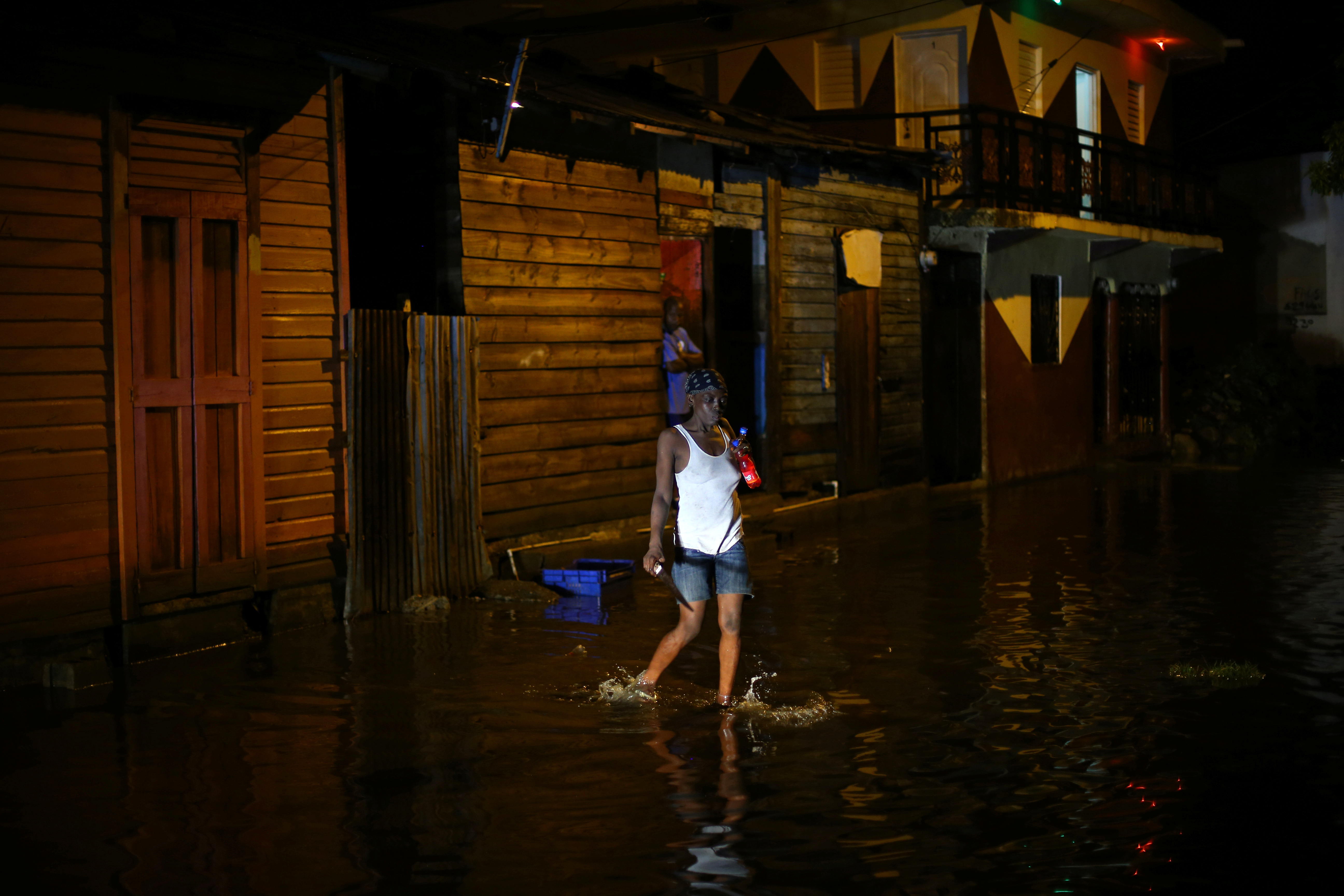
A woman walks through a flooded street as Hurricane Irma moves off from the northern coast of the Dominican Republic, in Puerto Plata, Dominican Republic September 7, 2017. REUTERS/Ivan Alvarado
“ENORMOUS DISASTER”
French Prime Minister Edouard Philippe lowered the death toll, saying four bodies were recovered on the tiny French-Dutch island of St. Martin, which was hit hard. Earlier, in the confusion surrounding Irma, France’s interior minister had said eight people were killed and nearly two dozen injured.
“It is an enormous disaster. Ninety-five percent of the island is destroyed. I am in shock,” Daniel Gibbs, chairman of a local council on St. Martin, told Radio Caribbean International.
Television footage from the island showed a damaged marina with boats tossed into piles, submerged streets and flooded homes. French President Emmanuel Macron spoke with British Prime Minister Theresa May on Thursday to coordinate an emergency humanitarian response.
Amid criticism from many residents that the British government could have done more to help its territories, Foreign Office Minister Alan Duncan said a Royal Navy ship would reach the affected islands on Thursday with tents, vehicles and other relief equipment.
“Anguilla received the hurricane’s full blast. The initial assessment is that the damage has been severe and in places critical,” he told parliament.
One person was killed on the island and roads were blocked, with damage to the hospital and airport, power and phone service, Anguilla emergency service officials said.
Britain’s Queen Elizabeth said she was “shocked and saddened” by the reports of Caribbean devastation.
In Puerto Rico, Rossello said it was to early to estimate the cost of the damage. The streets of the capital San Juan were littered with downed tree limbs and signs, with many street lights out.
Juan Pablo Aleman, a restaurant owner, said he had ridden out the storm in his 11th-floor apartment.
“The building moved, shook a few times. A lot of shingles came off and some windows broke,” he told Reuters. “If it had gone a little more to the south, it would have been catastrophic.”
The first bands of rain and wind began to lash Haiti’s normally bustling northern port city of Cap Haitien on Thursday.
Authorities went door to door, encouraging people to evacuate voluntarily from exposed areas, said Albert Moulion, a Ministry of the Interior spokesman.
“We’re asking all those living in areas at risk to leave their homes. If you don’t, you’ll be evacuated by force,” President Jovenel Moise said. “When you go to shelters you’ll find food, you’ll have something to sleep on.”
Irma was the strongest hurricane ever recorded in the Atlantic Ocean and one of the five most forceful storms to hit the Atlantic basin in 82 years, according to the NHC.
Florida Governor Rick Scott said it was unclear whether Irma would hit the state’s east or west coast but told residents to beware of the sea surge caused by powerful winds.
“The storm surge can kill you,” Scott said on the “CBS This Morning” program on Thursday. He urged people to heed local officials and be ready when the call came to leave their area, promising the government would provide transportation to those who need it.
“YOU’RE ON YOUR OWN”
With Irma set to become the second hurricane to hit the United States in as many weeks, Florida emergency management officials began evacuations, ordering tourists to leave the Florida Keys.
Roman Gastesi, the administrator of Monroe County, which encompasses the Florida Keys, told CNN that streets were empty in Key West and 90 percent of businesses were closed. County officials, including police and emergency workers, would be leaving, he said.
“If you’re going to stay, you’re on your own,” Gastesi said.
U.S. President Donald Trump was monitoring Irma’s progress. The president owns the waterfront Mar-a-Lago estate in Palm Beach, Florida.
Trump approved emergency declarations for the state, Puerto Rico and the U.S. Virgin Islands, mobilizing federal disaster relief efforts.
The island of Barbuda, one of the first hit by the storm, was reduced to “literally rubble,” said Gaston Browne, prime minister of Antigua and Barbuda, adding that one person was killed and that the tiny two-island nation will seek international assistance.
Browne told the BBC that about half of Barbuda’s population of some 1,800 were homeless while nine out of 10 buildings had suffered some damage and many were destroyed.
“It was easily one of the most emotionally painful experiences that I have had,” Browne said in an interview on BBC Radio Four, adding that it would take months or years to restore some level of normalcy to the island.
A surfer was also reported killed in Barbados.
Two other hurricanes formed on Wednesday.
Katia in the Gulf of Mexico posed no threat to the United States, according to U.S. forecasters. Hurricane Jose was about 815 miles (1,310 km) east of the Caribbean’s Lesser Antilles islands, and could eventually threaten the U.S. mainland.
The storm activity comes after Harvey claimed about 60 lives and caused property damage estimated to be as much as $180 billion in Texas and Louisiana.
(For a graphic on storms in the North Atlantic click http://tmsnrt.rs/2gcckz5)
(Reporting by Scott Malone in San Juan, Jorge Pinedo in Santo Domingo, Makini Brice in Cap Hatien, Guy Delva in Port au Prince, Sarah Marsh in Havana, Susan Heavey and Ian Simpson in Washington, Brendan O’Brien in Milwaukee, Estelle Shirbon in London, Matthias Blamont and Jean-Baptiste Vey in Paris, Toby Sterling in Amsterdam; Writing by Daniel Flynn and Frank Jack Daniel; Editing by Matthew Mpoke Bigg and Jeffrey Benkoe)
